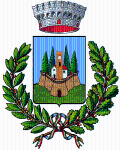Descrizione
Una delle Pievi più celebri della storia ecclesiastica della Toscana, secondo quanto affermato da Emanuele Repetti, nel suo Dizionario Geografico Fisico Storico della Toscana, risalente alla prima metà XIX secolo)
La Pieve di Santa Maria a Pacina è documentata fin dall’anno 650, mentre la sua fondazione potrebbe risalire al VI sec., non si esclude un preesistente tempio pagano anche per il ritrovamento in sito, del rocchio di una colonna romana. La torre campanaria cilindrica, le arcatelle pensili laterali nell’articolato sottostante la copertura, qualificano l’edificio come uno dei più interessanti esempi di architettura preromanica della Toscana. Il complesso attuale viene datato attorno all’anno Mille, ma alcuni storici vedono, proprio nella torre e nelle arcatelle, l’influenza diretta delle costruzioni ravennati del VII/VIII sec. Nell’anno 712 mentre si sviluppava il contenzioso fra i vescovi di Siena e Arezzo per il controllo di numerose pievi, a Pacina, durante un incontro fra delegazioni e alla presenza del vescovo di Arezzo, si registrò un clamoroso fatto di sangue con l’uccisione di un giudice senese. Fra alterne vicende, solo nel 1220 papa Onorio III confermò definitivamente il possesso della pieve alla Diocesi di Arezzo.
Nel 1724 gli interni della Pieve furono completamente rimaneggiati , senza alterare la struttura originaria a chiesa basilicale di impianto quasi quadrato a tre navate concluse da tre absidi (quella di destra è andata perduta prima del 1825), con copertura a capriate lignee. In quella occasione fu realizzato un ampliamento della chiesa con l’avanzamento di due navate fino alla torre campanaria, in origine isolata.
All’interno troviamo una Crocifissione e un Battesimo di Gesù in stucco, di artista senese di inizio Settecento; appartengono alla chiesa anche una tavola raffigurante la Madonna con il Bambino firmata da Andrea di Niccolò (1440 ca. – post 1514), e un grande crocifisso ligneo che Marco Ciampolini ritiene di provenienza Germania meridionale e databile fine XIII/inizio XIV sec. Queste opere sono ora custodite nella Sala raccolta d’Arte a Castelnuovo. Nell’Ottocento furono modificate le volte delle navate laterali e la cella campanaria. Nel Novecento sono da segnalare il rifacimento della facciata, la demolizione della merlatura del campanile e la recente intonacatura della facciata.
English version:
One of the most celebrated parish churches in the ecclesiastical history of Tuscany (E. Repetti – Dictionary – first half of the 19th century)
The Parish church of Santa Maria a Pacina was first documented in the year 650, while its founding probably dates to the 6th century; the presence of an earlier pagan temple on the same site is also a possibility, considering the finding of a Roman column tambour. The cylindrical bell tower and the small lateral hanging arches beneath the roof make the building one of the most interesting examples of pre-Romanesque architecture in Tuscany. The current complex dates to around the year 1000, but some scholars see the direct influence, in the tower and the small arches specifically, of the 7th/8th-century architecture of Ravenna. In the year 712, as a dispute was arising between the bishops of Siena and Arezzo for control of numerous parish churches, during a meeting between delegations and in the presence of the bishop of Arezzo at Pacina, a sensational act of violence occurred with the killing of a Sienese judge. Amid various events and vicissitudes, it was not until 1220 that Pope Honorius III definitively confirmed that the parish was a possession of the Diocese of Arezzo.
In 1724 the interior was completely revamped, without altering the original structure of the basilica-type church with a nearly-square floor plan with three naves and three apses (the one on the right was lost prior to 1825) and a roof of wooden trusses. At the same time, the church was enlarged, with two naves shifted forward to reach the bell tower, which originally stood separate from the church.
Inside the church we have a Crucifixion and a Baptism of Jesus in stucco by an early-18th-century Sienese artist. Two other works belonging to the church are a panel with a depiction of the Madonna and Child signed by Andrea di Niccolò (1440 ca. – post 1514) and a large wooden crucifix that Marco Ciampolini considers to be of southern German provenance and dates to the late 13th/early14th century. Both works are now conserved in the Art Collection Space in Castelnuovo. In the 19th century, the vaults of the lateral naves and the bell tower were altered. In the 20th century, the façade was redone, the crenellations of the bell tower were demolished, and the façade was very recently replastered.
Modalità d'accesso
sempre aperto
Indirizzo
Punti di contatto
Ultimo aggiornamento: 4 marzo 2024, 12:44

